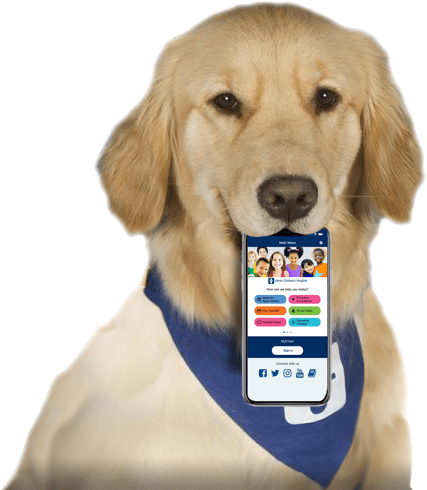Corneal Abrasions
What Are Corneal Abrasions?
Corneal abrasions are a common type of eye injury in kids, teens, and adults. They happen when something scratches the surface of the eye.
Corneal (KOR-nee-ul) abrasions usually aren't serious and most heal within a few days. But they’re often painful and do need some attention. Luckily, long-term vision usually isn't affected, but in rare cases, a corneal abrasion can get infected. It's important to have a doctor examine your child's eye if you think they might have a corneal abrasion.
What Causes Corneal Abrasions?
The front of the eye is covered by a clear, transparent tissue called the cornea. The cornea helps the eye focus and is its outermost layer of protection for the contents inside the eyeball. Injuries can happen from scratches and cuts, or if something brushes up against the cornea. When particles get onto the cornea, tears usually help to wash them away.
Sometimes, debris or objects can touch the cornea in such a way that it scratches, cuts, or damages its surface. This damage can happen from dust, sand, metallic/rust particles, leaves, glitter, wood shavings, sparks, bugs, pieces of paper, toys, and even fingernails. The cornea also can be damaged by chemical irritants, superglue, improper use of contact lenses, and reactions to things like contact lens solutions and eye makeup.
What Are the Signs & Symptoms of Corneal Abrasions?
Kids might complain of stinging or burning in the eye, pain, or blurred vision. They’ll likely be hesitant to open the eye.
Other symptoms can include:
- sensitivity to light
- red or bloodshot eyes
- swollen eyelids
- a watery eye and increased tears
- the feeling of something being in the eye (foreign-body sensation)
If you think your child might have a corneal abrasion, have a doctor check as soon as possible. If your child is in a lot of pain or can't open the eye, go to the emergency room or an urgent care center.
How Are Corneal Abrasions Diagnosed?
If your child has any symptoms of a corneal abrasion, call your doctor. Even though they're rarely serious, corneal abrasions should be checked out. It's important to rule out more serious damage to the eyeball. The doctor can see how serious the injury is and prescribe antibiotic eye drops or ointment to help it heal.
The doctor will examine the eye and ask about the symptoms and what caused the abrasion. Your child might not know the exact cause, but probably will remember when it happened.
The doctor will do a test called a fluorescein eye stain. The doctor puts the fluorescein (fluh-RESS-ee-en) dye on the surface of the eye. Then, the doctor looks at the eye under a blue filtered light. Under the light, the dye makes any abrasion look bright green so that it's clearly visible.
Other tests the doctor might do include a vision check and an eye exam with a special microscope called a slit lamp.
How Are Corneal Abrasions Treated?
To treat a corneal abrasion, your doctor may recommend prescription antibiotic eye drops or ointment. If your child's eye hurts, the doctor may suggest pain medicines. If your child normally wears contact lenses, the doctor may instruct your child to wear glasses instead for a few days.
If your child still has symptoms of a corneal abrasion after a few days of using antibiotic drops or ointment, or the symptoms get worse after treatment, let the doctor know right away.
Can Corneal Abrasions Be Prevented?
To help prevent corneal abrasions:
- Kids should wear eye protection, such as safety goggles or a facemask, when they work with tools, handle chemicals, or play sports where an eye could be seriously injured. This includes sports like racquetball, skiing, snowboarding, hockey, and lacrosse.
- Be careful when playing with pets. Cats, dogs, and other animals can act in unpredictable ways and scratch an eye without meaning to.
- If your child wears contact lenses, make sure they fit well, and are worn and cleaned as directed. Keeping fingernails neatly trimmed can help prevent accidental scratches when putting in or removing contacts.
- If you have plants around your yard that someone could walk into, trim away any branches at eye level.
- If your child gets an irritant like soap or dust in the eye, they eye will likely need to be carefully irrigated at home. If anything is stuck in the eye, let a doctor remove it safely. Don’t try to remove the object yourself. This could hurt the eye even more.
Reviewed by: Sarah Logan, MD
Date Reviewed: Sep 5, 2023
















